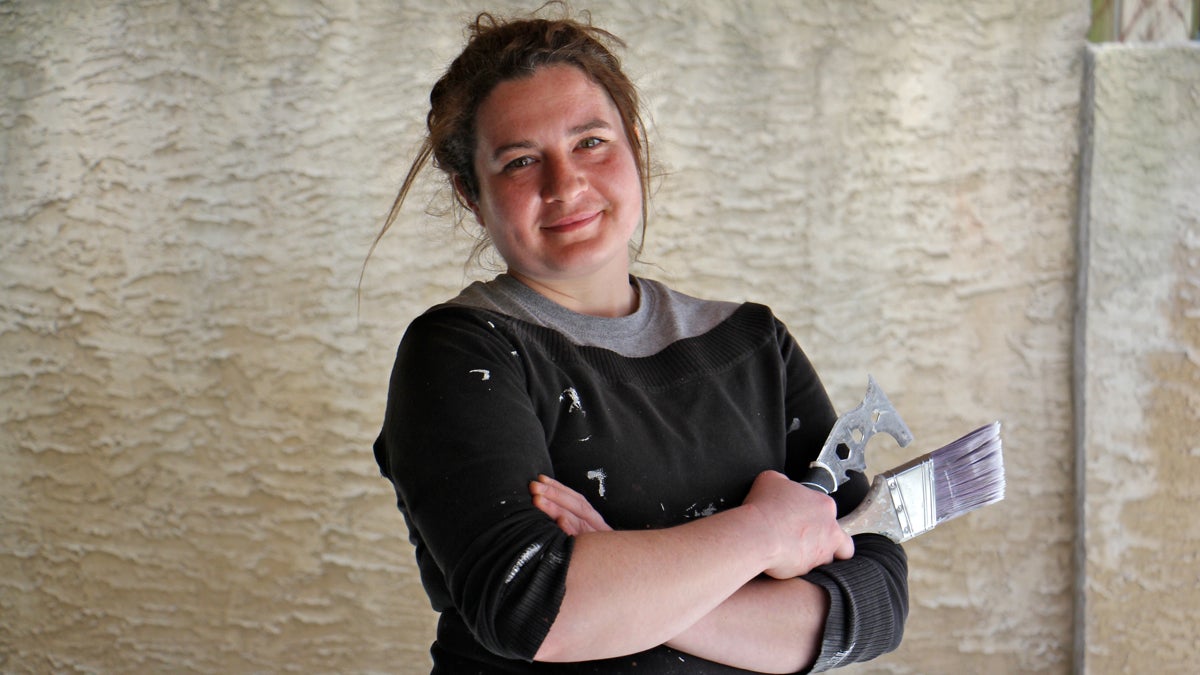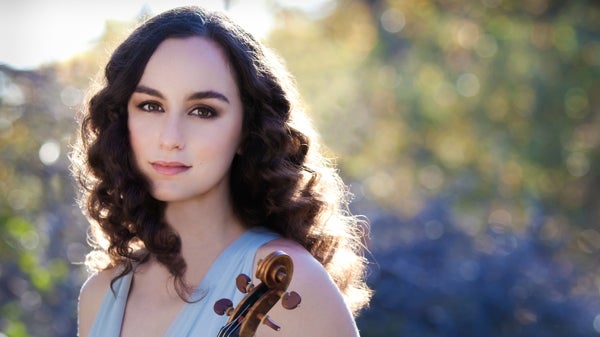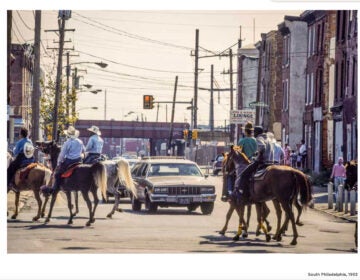Annenberg center selects eight artists for final round of $50,000 fellowships
Listen
Annenberg Fellowship recipeint Emily Erb. (Emma Lee/WHYY)
The Annenberg Public Policy Center at the University of Pennsylvania will announce the recipients of its annual fellowship program Wednesday. Eight artists have been tapped to receive $50,000 to advance their careers.
It’s the last time the center will award the fellowships. After 10 years, the Leonore Annenberg Fellowship Fund for the Performing and Visual Arts program is calling it quits.
Established in 2008 as a “wasting” endowment, the program was designed to spend itself out over a decade. In that time, it will have distributed $6 million to 70 artists.
A selection panel sought out artists nationwide who could demonstrate both artistic talent and what director Gail Levin called “nobility of character,” people who might continue the values of the fellowship long after it ends.
“It’s like Johnny Appleseed,” said Levin. “We hope we’ve planted the seeds for young artists to not only launch their careers, but be a role model for others in their field, find ways to nurture others as they were nurtured. It’s the Golden Rule.”
One of the most high-profile recipients was also one of the first. Misty Copeland was part of the first round of fellowship winners in 2008. She wanted to round out her dance career with classes in acting, singing, classical ballet repertoire, and rhetoric.
That last one baffled Levin.
“One of the things she wanted to do was take some public speaking classes,” said Levin. “I remember thinking, ‘That’s unusual for a ballet dancer. I wonder what she is anticipating.’”
Misty Copeland went on to become the first African-American principal dancer with the American Ballet Theatre and a cultural icon of black artistic achievement — a very public role she has shouldered with enthusiasm. With four books to her name, she has remained actively engaged in mentorships and media appearances.
Another past recipient of an Annenberg fellowship is Francesca dePasquale, a violinist and part of a Philadelphia Orchestra dynasty. Her late father, William dePasquale, was the orchestra’s longtime concertmaster, while her mother, Gloria, and three uncles still play in the orchestra.
 Francesca dePasquale received an Annenberg Fellowship in 2014. (Alexandra DeFurio)
Francesca dePasquale received an Annenberg Fellowship in 2014. (Alexandra DeFurio)
She used the fellowship to record her debut album, released last year, which includes music by Bach, Messiaen, Schumann, Bartok, Korngold, and a new work dePasquale commissioned from composer Paola Prestini.
“Contemporary music is unbelievably important,” said dePasquale. “With the album, my goal was to present a self-portrait of myself as an artist.”
During a recital tour to support the album, dePasquale scheduled outreach appearances in each of the nine cities she visited — she played at elementary schools, retirement centers, and community centers.
The outreach programs outnumbered the recital dates. “It’s something that has always been important to me and something I will continue to find room for,” she said.
‘Timing is everything’
Eight artists were selected as the final round of Annenberg fellowship recipients, including an opera singer from Boston (Samantha Hankey); a Mexican-American painter from Chicago (Herman Aguirre); a cellist from South Korea who studied at Julliard (Jia Kim); an actor born in China and raised in Texas (Ruibo Qian); the son of Ghanian parents who is now a singer, dancer, and actor on Broadway and television (Ato Blankson-Wood); a cellist who once performed for President Barak Obama at the White House (Khari Joyner); a soloist with American Ballet Theatre (Cassandra Trenary); and Philadelphia artist Emily Erb, who paints on silk.
Erb, originally from Richmond, Virginia, discovered silk painting while studying art at Temple University’s Tyler School of Art, but she didn’t fully realize its artistic possibilities until she encountered it again while traveling in Madagascar.
“It’s in the craft realm,” she said. “In general people find Eastern techniques are craft, and Western techniques are fine art, which I’m ready to challenge.”
Lately she has been thinking a lot about money. One of her major projects, “Legal Tender,” consists of exact re-creations of paper currency throughout American history, painted on large silk banners. The work is subtly political, examining the iconography that the United States has been printing onto its bills, then hanging them as flags.
In terms of real money, Erb has been supporting herself primarily by painting houses for a local contractor for seven years, while earning an MFA from the Pennsylvania Academy of the Fine Arts (2012), then working out of a small studio in West Philadelphia. Her big break came in 2014 when the Crystal Bridges Museum in Arkansas included her work in a show of contemporary American art, “State of the Art.”
Erb seemed poised for the next big thing.
“I say timing is everything,” said Levin, about selecting the right people at the right moment for a $50,000 boost. “If it comes at the right time in a young artist’s life, the payoff will be huge — and long term.”
Erb wants to use the fellowship to move into a bigger studio in South Philadelphia, and do some more traveling around the world.
“My goal is to prove that I’m worthy of this grant,” she said. “I think the No. 1 way to do that is to make art that is better than what I made before.”
WHYY is your source for fact-based, in-depth journalism and information. As a nonprofit organization, we rely on financial support from readers like you. Please give today.




